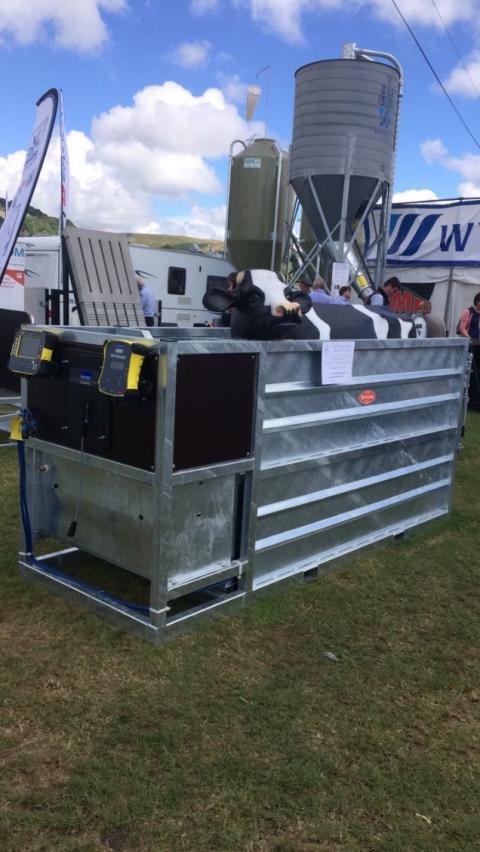Richie Beef Monitor
The Beef Monitor Unit is a cattle handling apparatus that incorporates a water trough, weighing scales and EID reader.
It won the 2017 Royal Welsh Show Dr Alban Davies Trophy that recognizes the most innovative implement, machine, or device that’s likely to be of most benefit to Welsh farmers.
It is targeted towards indoor beef finishing units as a monitoring tool for daily live weight gains (DLWG) of individual animal and for a group basis (up to 50 cattle per unit). When internet is provided, the EID and weigh scales can be synchronized to notify the farmer on a tablet or phone via the cloud database. This has many benefits including reduced labour, less animal handling time and stress, timely DLWG recording and enhances a farm benchmarking capability.
Richie are looking to further develop this product to include a 3-D camera for on farm carcass conformation, allowing a farmer to have greater control for monitoring their beef animals. This information could also be shared with abattoirs for improved data transfer and conformation, as well as other industry stakeholders such as nutritionists, advisors, and vets.
Cattle will adapt their behavior to be comfortable in the enclosed crate for access to water. I believe this product could be developed to include a back door to hold a beef animal, potentially through an automated system via the EID reader. A side door could be included to provide a farmer with an easy drafting facility i.e. treating an individual lameness case.
Being able to monitor water intakes provides an opportunity for farmers to accurately supply minerals and trace elements which can be inconsistent for individual animals in a group fed via a diet which can improve overall animal health.
I also could see a benefit for extensive beef producers, although internet access is an obstacle for many farmers, technology is constantly progressing and I can see this being available in the future. Regardless, a system could be developed for farmers to download the data without the cloud data base.
Studies have found that mixed grazing is the best system to maintain and enhance carbon storage on uplands as cows are non-selective grazers. Environmental policy makers are going to be more focused on carbon storage, which led me to think that breeding cow numbers could be increased in the uplands to provide the ‘nucleus’ for beef progeny to be finished away from the upland, particularly where investing in renewables is not an option. This could lower ewe breeding numbers as the lamb industry is expected to have a more volatile market than that of beef. I saw Richie’s Beef Monitor Unit as an opportunity for upland farming business to reduce family labour which could be invested in other enterprises or diversifications.
Again, this product could be further developed for easy transport depending on grazing system used and can be easily connected to a water system.

